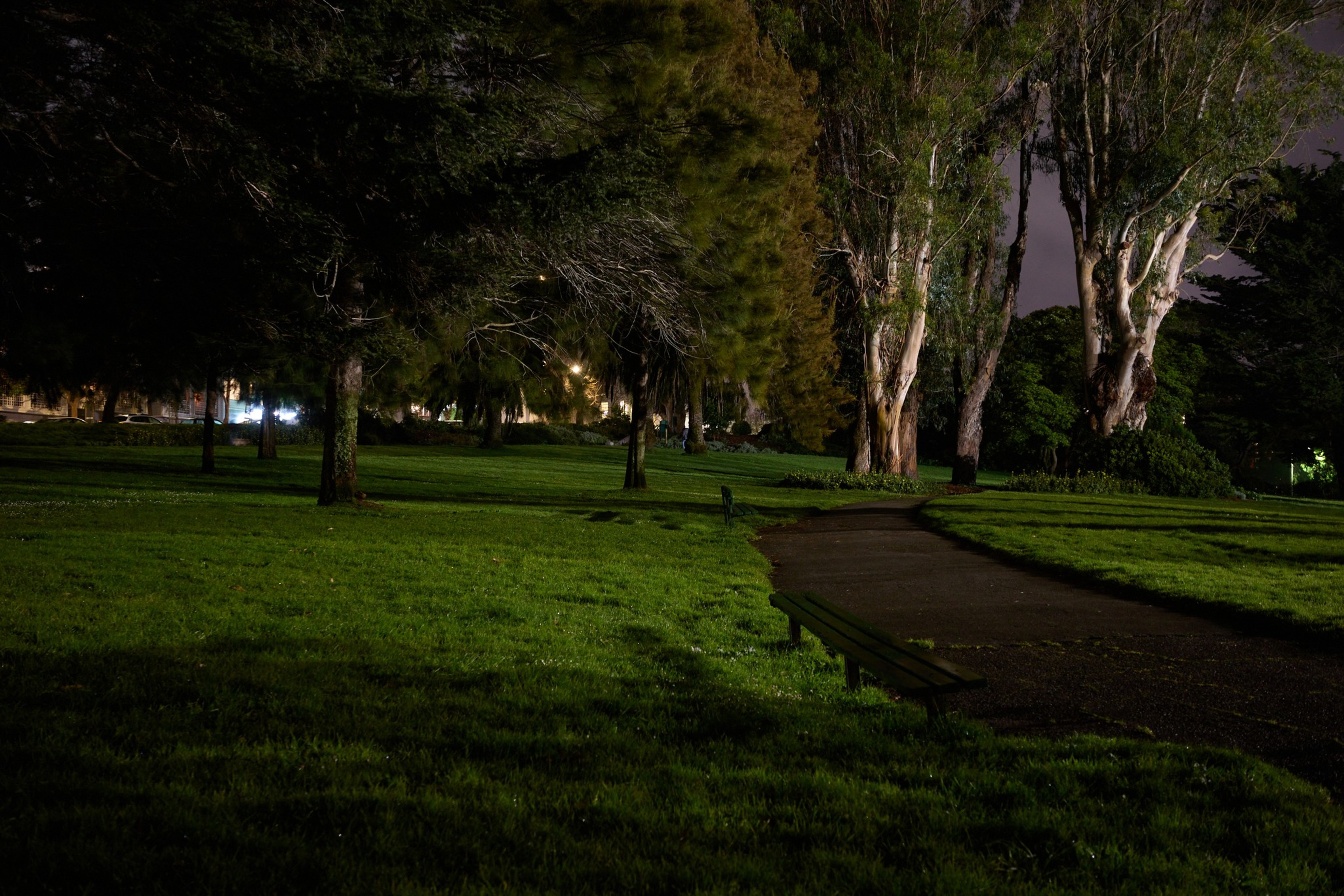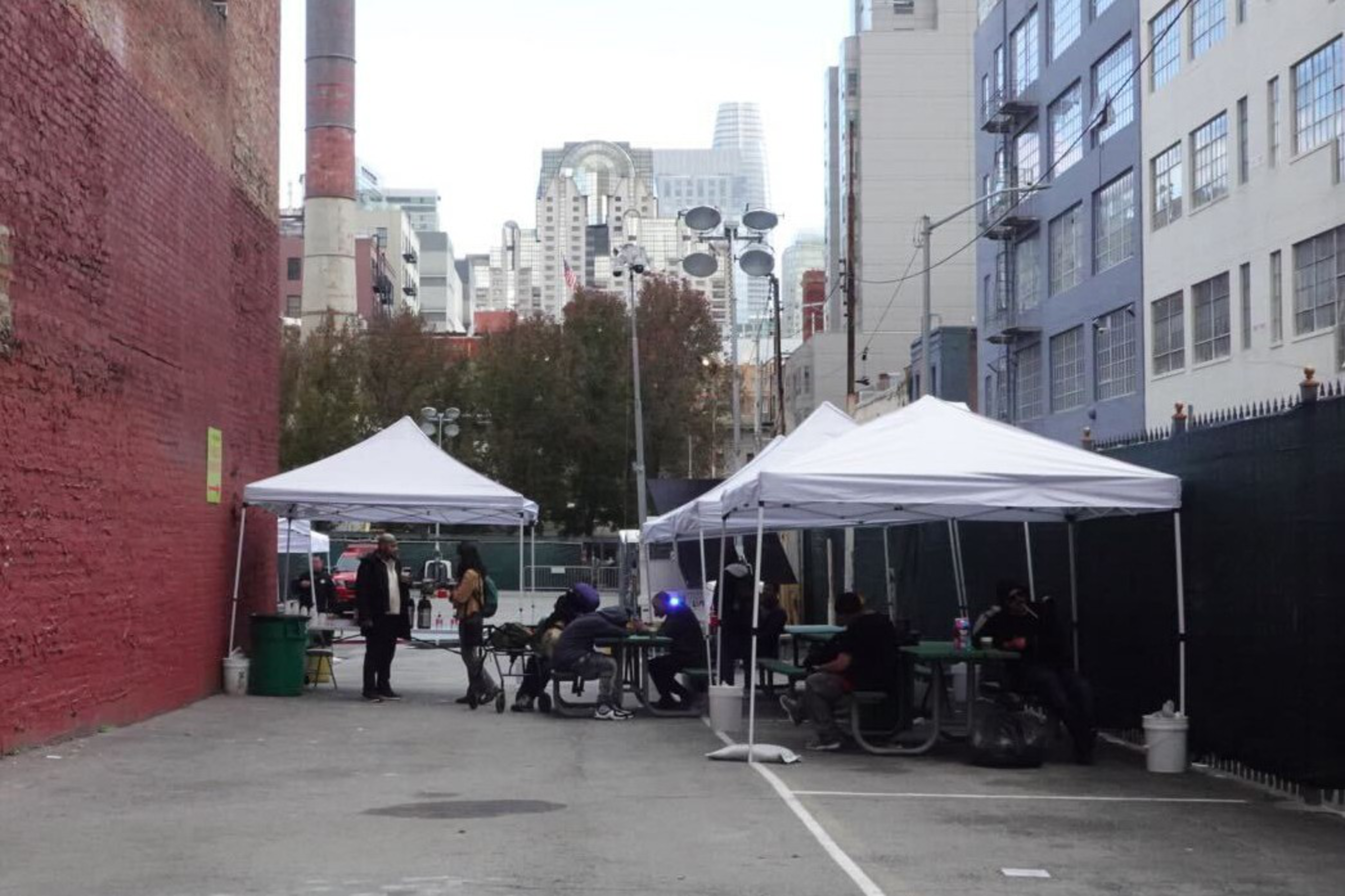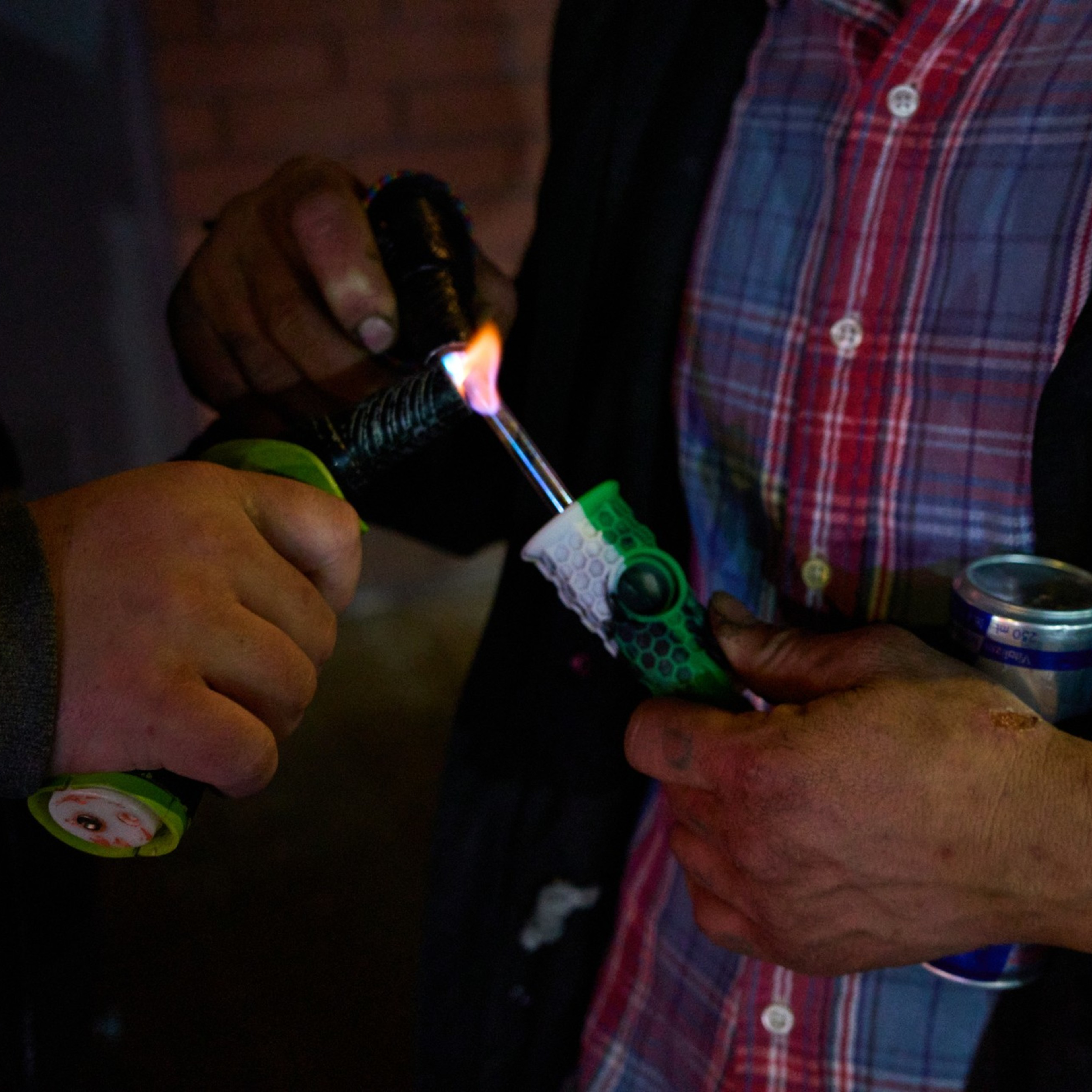Jefferson Square Park is a haven in the Western Addition. During the day, residents walk their dogs among the foliage. Students pass to and from school. And a relative quiet falls over the green space just two blocks from one of the city’s most busy thoroughfares, Van Ness Avenue.
But when The Standard visited Monday night, drug dealers hid in the bushes. A park ranger shuffled groups of users and illegal vendors around the block. People lay slumped in nearby doorways. All in, there were about 25 people using and selling drugs and trading in other wares.


Drew Ersland, who is homeless and addicted to drugs, sold candy to other users between the rangers’ sweeps.
“I got candy. Zoom zooms. Wam wams,” he told a passerby, using prison slang to describe his supply of Reese’s cupcakes, Mike and Ike, and Sour Patch Kids. “You ain’t never seen Reese’s cupcakes before.”
Jefferson Square is one of the latest spots for the ever-moving drug market. Ramped-up enforcement since spring 2023 has gradually pushed illicit activity from the Tenderloin, Civic Center, and Sixth Street toward the Mission and other neighborhoods. Locals say a night market has been growing in the park over the past few months.

Ersland said the enforcement has driven up the price of drugs and worn down the spirits of homeless people and those with severe addictions. But lasting solutions evade the city.
“They pushed us to one hill,” Ersland said. “Tomorrow it will be another one.”
A man who lives near the park and gave the name Marco was seen dumping water on his doorstep Monday night to prevent people from gathering outside his apartment, echoing a tactic employed by some businesses. He said he repeats this ritual three times a night with hopes that his children won’t need to step over homeless people the next morning.
“I’m getting used to it,” he said. “That’s San Francisco. It’s sad to say.”

His neighbor Katherine Barkman said she no longer walks at night and drives to work just a few blocks away. Barkman said she empathizes with homeless people and wants the city to find a permanent fix.
“It’s a really beautiful space that I feel like is just becoming a bit unsafe,” Barkman said. “But clearing out isn’t a solution. … These are people’s sons and daughters.”

‘Thrown in jail or left to rot’
Ersland, 35, said he became addicted to painkillers after he was involved in a car accident nearly two decades ago. He has since bounced in and out of rehabs and jails. Most nights now, he sells candy on the streets.
Candy is one of the most popular items sold by illegal vendors, along with hygiene products, because it’s cheap and easy to carry. A sugar high can help drug users stave off withdrawal symptoms by activating similar pleasure receptors in the brain, according to experts.
At around 10 p.m. Monday, a man traded Ersland a rock of fentanyl for a box of Mike and Ike fruit candies.
“I make more money off the zoom zooms and the wam wams than they do with the dope,” Ersland said. “I traded three Sour Patch Kids for a half gram the other night.”


However, his life on the streets is anything but sweet.
Ersland said he has failed multiple times to quit his drug habit cold turkey. And methadone, a drug commonly prescribed to combat opioid withdrawals, is even more difficult to kick.
“You’d think they’d come up with better ways to treat these things,” Ersland said. “I’ve got to go to rehab soon, but you can’t do this shit alone. … Everyone’s just thrown in jail or left to rot somewhere.”
Others who had gathered in the park said drug use is just a symptom of their homelessness, which has become more difficult to escape as the city increases enforcement.
“It’s hard enough for me to keep a backpack, let alone make it to an appointment,” said a homeless man named Tom who declined to give a last name. “They’ve put so many programs in place just to make homeless people worse off.”
Local leaders have disagreements about the path forward. Some want to see the city move away from punishing drug users and homeless people. But Mayor Daniel Lurie has made enforcing anti-drug laws a priority of his administration.
Lurie has also vowed to expand the city’s shelter and treatment portfolio. However, details on that plan remain scarce.
The city opened a triage center on Sixth Street a few weeks ago to process arrests and connect people to services. The area subsequently saw an improvement in conditions, according to residents. However, the mayor’s office has repeatedly delayed releasing outcome data from the triage site. Lurie’s office didn’t respond to a request for comment by publication time.

Supervisor Stephen Sherrill, whose district borders the park, said he’s focused on addressing conditions there. But he didn’t further explain the city’s plan.
“The situation is untenable – we know it,” Sherrill said in an emailed statement. “Residents are going to be hearing from us soon. Restoring our community’s safety and well-being is my top priority.”
While residents wait for details, the “San Francisco shuffle” continues.
“It’s a cat-and-mouse bullshit game,” Tom said. “There’s no way to sweep this away. These are human beings.”

